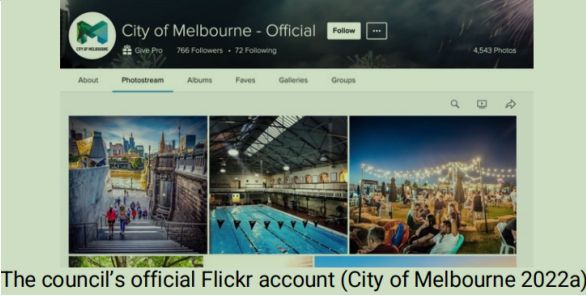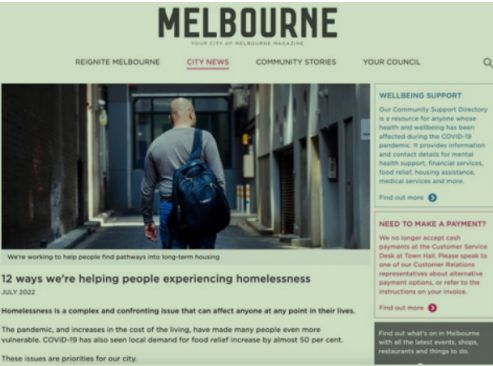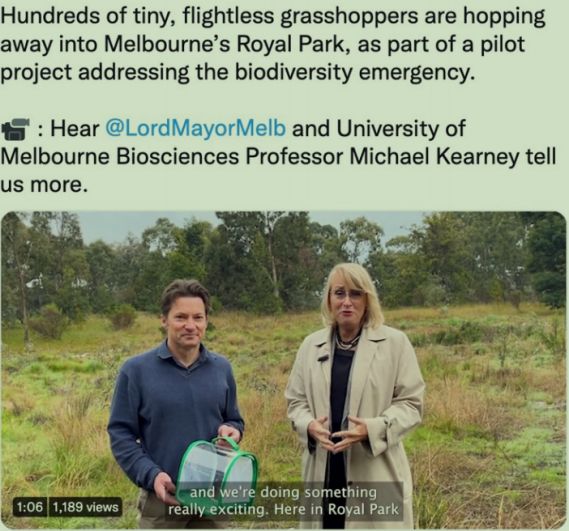Prepare A Report And Presentation on An Analysis Of Social Media Strategy
- University :
Latrobe University Exam Question Bank is not sponsored or endorsed by this college or university.
- Country :
Australia
Sample report note this 1480 word sample isnt the best. I would expect a lot more referencing, for a start; more details under each subheading; and more on the organisations narrative under organisational overview. However, it should give you an idea of what to submit.
Title
An analysis of social media strategy by the City of Melbourne
Organisational overview
Melbourne is the capital of Victoria, Australia. It is run by the City of Melbourne which is one of 79 municipal authorities in Victoria operating as a public statutory body under the Local Government Act 1989.
The City of Melbourne employs 1300 staff.
The population of the local government area under the City of Melbourne is about 170,000 people. The suburbs in the area include Carlton, Docklands, East Melbourne, Melbourne CBD, North Melbourne, West Melbourne, Port Melbourne, Parkville, Southbank, and Kensington.
Melbourne has been voted the worlds most liveable many times over. Before the pandemic Melbourne had the largest night time entertainment economy in Australia and an annual Gross Local Product of more than $104 billion. Greater Melbourne was on track to become the biggest city in the country, by 2030.
Organisational content strategy
The City of Melbourne generates three main types of content which are appropriate to the format of the social media platform for which the content is produced. These types of content are: still images, text or copy, and videos.

- Text / copy
The council uses text/copy in its social media content as applicable to the relevant platforms, such as Facebook or Twitter. The council also produces a range of online content separate to its social media accounts which are based on text/copy including its policies and strategies, council minutes, and the magazine Melbourne. In most cases, these non-social media examples of content such as the articles from Melbourne magazine - are promoted or linked to via the councils social media channels.

An article from the digital Melbourne magazine (City of Melbourne 2022c)
- Video
Where the social media platforms format warrants it, the council creates and posts video either supporting or supported by text/copy.
 A video posted to the councils Twitter account (City of Melbourne 2022b)
A video posted to the councils Twitter account (City of Melbourne 2022b)
Audience
The audience for the City of Melbournes digital content is comprised of residents and visitors to the city.
- The population of Melbournes municipality is made up of people of all ages and from many different cultures. Residents of the central business district and surrounding suburbs that fall within the City of Melbournes local government area include young professionals, international students, and older couples. More than fifty per cent of the residents in the local government area of Melbourne were born overseas.
- On an average weekday around 949,000 people use the city from both the local government area of Melbourne, and from greater Melbourne. Each year the city hosts over a million international visitors.
Platforms
The City of Melbourne uses Facebook, Twitter, Youtube, Flickr, Instagram as its main social media communication channels. Prior to the pandemic the council set up a WeChat account aimed at more than 650,000 Chinese visitors to Victoria each year; it also has an official LinkedIn page (targeting business audiences) with 121,781 followers.
Its social media use varies across platforms, considering each platforms mode. For example, videos are posted on Youtube while the councils visual social media use on platforms such as Instagram or Flickr showcase still images.
However, content appears to be specific to each channel that is, the content is not cross posted to different platforms even where the platform is reliant on the same format. A still image posted to the City of Melbourne Instagram account appears to be produced purely for the Instagram account and it is not cross posted to the councils Flickr account. Similarly, a video posted to the councils Twitter or Facebook accounts wont be the same video posted to the councils Youtube account.

Comparison of the most recent images to the councils Instagram and Flickr pages This suggests that the councils social media strategy relies on content that is exclusive to each platform and created for the purpose of being posted on that platform.
Interaction and engagement
On the general, major social media accounts the City of Melbourne has the following number of followers or subscribers.
Facebook 182,000 followers
Twitter 367,800 followers
Youtube 4,230 subscribers
Flickr 766 followers
Instagram 337,000 followers
In terms of frequency of content, this varies across platforms. The council posted to Instagram on the 2nd, 9th, and 11th of August; its most recent posts on Flickr were on January 27th and January 25th 2019. It posts between two to three videos a month on Youtube, and once every two to three days on Facebook and Twitter.
The City of Melbourne has extremely minimal engagement with followers and subscribers, tending not to respond to comments on its posts.
Analysis of content strategy by the organisation
The lack of cross-posting across platforms by the City of Melbourne suggests that the councils social media strategy involves knowledge of the different demographics that use each platform, and therefore an awareness by council that content should be created for the express purpose of being posted to individual platforms (ie. content that is exclusive to each platform).
The City of Melbourne also appears to be cognizant of changes in social media trends, for instance appearing to have all but abandoned its Flickr account in favour of the more widely used Instagram; and recognising the need to use WeChat given the large proportion of Chinese speaking residents and visitors to the local government area of Melbourne. Despite the pandemic putting the brakes on Chinese inbound tourism, the re-starting of the international student market suggests the WeChat account being a prescient move.
However, this knowledge of social media trends appears to be on a superficial level, as the council does not appear to have set up accounts on the platforms used widely by young people (such as Tiktok). It is aware of different audiences for its content and set up different accounts accordingly WeChat for the Mandarin speaking demographic; LinkedIn for businesses engaged with or in the City of Melbourne local government area; Facebook and Instagram for residents and visitors but has not yet reached out to the younger demographic on emerging platforms like Tiktok.
Recommendations
By nature, local government administrations tend to be conservative in culture and resistant to change (because of factors such as the average age of elected officials, which tends to skew older). The local government area under the City of Melbourne is one of the most progressive in Australia, as seen through its residents voting records. The council should be recognized for its early embracing of social media in efforts to reach the younger, diverse population that marks the population of the City of Melbourne local government area. However, to improve the reach of the councils digital content (and therefore the impact of its messaging / narrative) the following recommendations about its social media strategy should be considered.
Frequency of posting
While the organisation is drawing on best practice in varying the frequency of posting across platforms (Salazar 2017), the inconsistency of posting reduces the potential spread and impact of the City of Melbournes content. For example, Instagram posts in August were made on the 2nd, 9th, and 11th days of the month, with no seeming logic as to why these dates worked for the posting of new content.
While engagement increases when post frequency increases, engagement then decreases after a certain point. The councils social media content strategy would best be served with a detailed assessment of the point at which posting frequency results in higher engagement and/or views.
Cross-posting
While the council is to be commended for avoiding large amounts of cross-posting, a case could be made to streamline social media content resources, and allow for some cross-posting to maximise the use of digital content produced by the countils social media team. The content could be edited or presented in different ways according to the platform for instance, different cuts of the same video could be used on Youtube, Facebook, and Twitter which in turn could allow a higher number of posts to be made.
Consolidation
The City of Melbourne has several channels on social media through which content is distributed. The platforms discussed here do not take into account other social media accounts run by the council (such as social media accounts for specific council events like the Moomba festival or accounts for community and sporting venues in the Melbourne local government area). The thorough audit or assessment of the impact of council social content (mentioned above under frequency of posting) could also take into account whether council should consolidate the number of platforms, closing or archiving those that appear inactive (eg the City of Melbourne Flickr page) and establishing new accounts on platforms popular with emerging audience segments.

